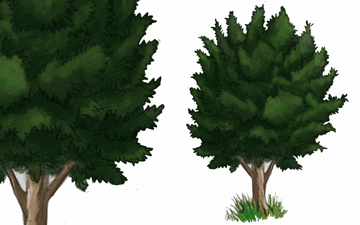Gevuina avellana (Chilean hazel, avellano chileno in Spanish) is an evergreen tree of the family Proteaceae, up to 20 meters (65 feet) tall. It is native to southern Chile and adjacent valleys in Argentina. It is found from sea level to 700 meters (2300 feet) above sea level. Its distribution extends from 35° to 44° south latitude. The composite leaves are bright green and toothed, and the tree is in flower between July and November. The flowers are very small and beige to whitish, are bisexual and group two by two in long racemes. The fruit is a dark red nut when young and turns black. It can grow up straight or branched from the soil.

The seeds are eaten raw, cooked in boiling water or toasted. The nuts contain about 12 percent protein, 49 percent oil, and 24 percent carbohydrates.[1] The seed has a very high concentration of monosaturated oil and is also obtained for several purposes in Chile. It is rich in antioxidants and helps fighting cholesterol. The nut is a good source of Vitamin E (a-tocotrienol) and b-carotene. Its oil is useful for elaborating sunscreen in pharmaceutical industry. Gevuina Oil is a used as cosmetic ingredient for treatment of skin owing to its moisturizing qualities and because is a natural source of Omega 7 (Palmitoleic acid).[2][3] The tree is a good honey plant for bees. Seed shells contain tannin that is used for tanning leather. It is cultivated as ornamental. It has an acceptable frost resistance (at least −12 °C (10 °F)) when mature.
The wood is cream-colored with dark brown streaking and is used in cabinetry and musical instruments. It was introduced to Great Britain in 1826. It grows well in there and in New Zealand and California. There are a few specimens cultivated in Spain[4] and the Pacific Northwest of the United States[5]. It grows well in temperate oceanic climates with cool temperatures where frosts occur commonly in winter, and that is why it has thrived in southern New Zealand. It lasts 5 years to be harvested and 7 or 8 years for full production. In Seattle, Washington, squirrels and birds eat seeds from the trees. Most of nuts that are for sale are gathered in southern hemisphere’s autumn (March and April), but new varieties of greater yield are being developed in Chile and New Zealand.
(From Wikipedia, 15 July 2011)





